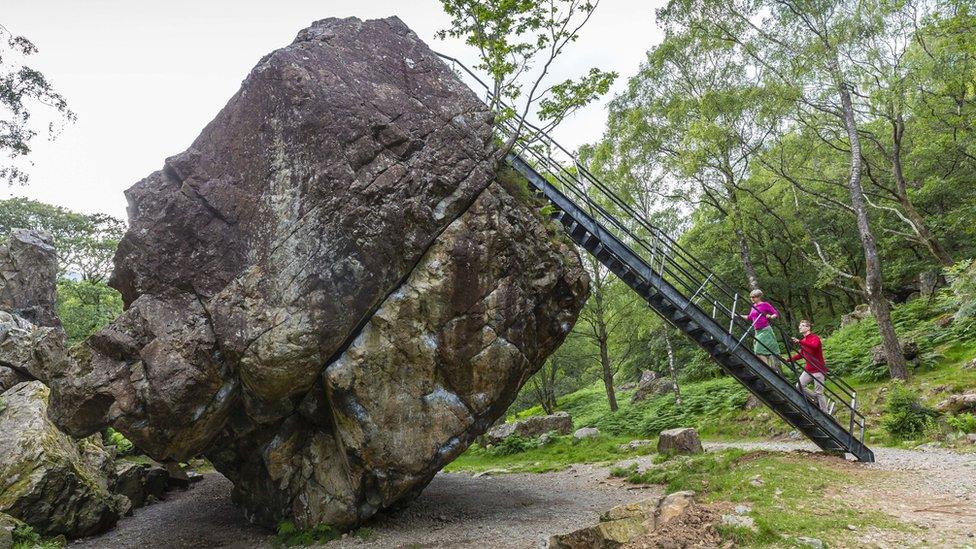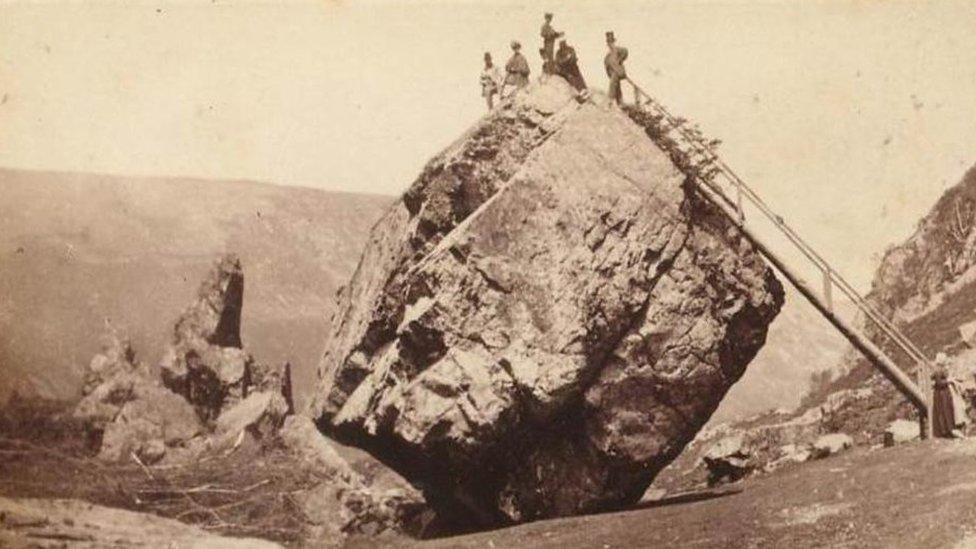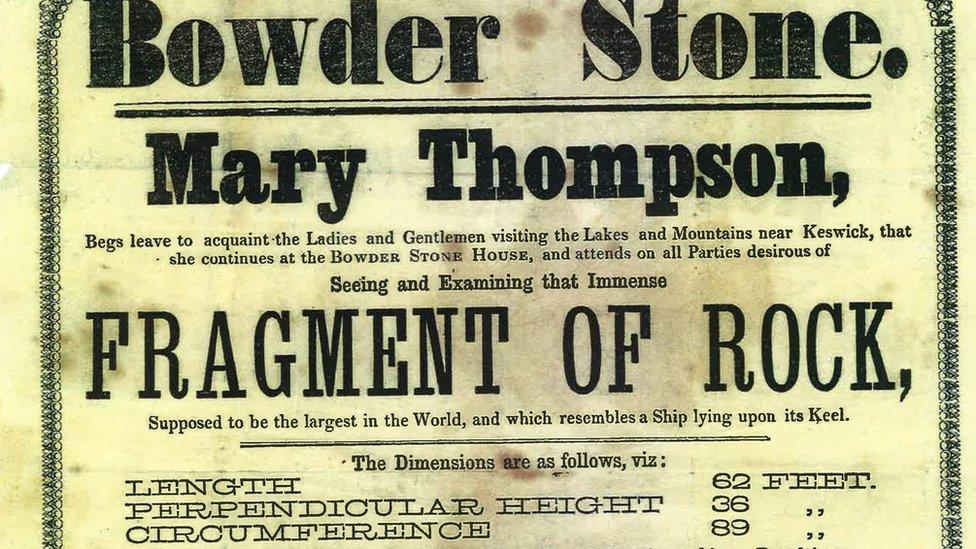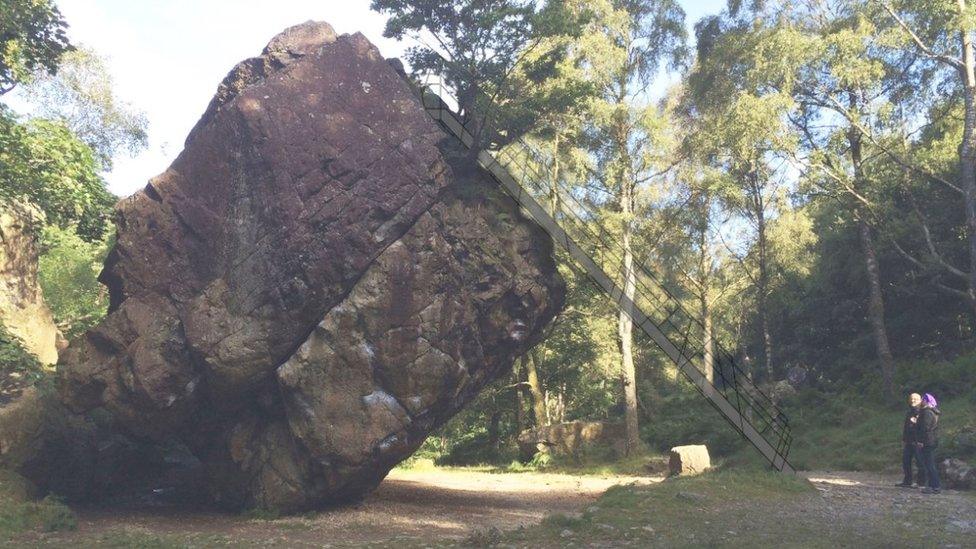Lake District Bowder Stone ladder replaced
- Published

The metal ladder is about 30ft (9m) high
A Lake District rock, described as "one of the strangest" tourist attractions, has been given a new lease of life.
The giant Bowder Stone, near Keswick, became famous with Victorian-era thrill-seekers after a flimsy wooden ladder was first installed in 1798.
The last wooden ladder, installed in the 1980s, was declared unsafe by the National Trust, which owns the site.
It has now installed a 30ft (9m) metal ladder, which allows tourists safer access to the top.
The boulder, which is about 50ft (15m) wide and weighs about 1,253 tonnes, is thought to have fallen from the crags above after the last ice age, coming to rest at its current improbable angle.

The stone became popular with tourists during the Victorian era

How the Bowder Stone was advertised
National Trust curator Harvey Wilkinson said: "This is about restoring the excitement of a visit to one of the strangest and at one time the most famous Lake District attraction.
"The Bowder Stone is a powerful reminder of change in the landscape, viewed through the eyes of the painters, poets and writers who portrayed it.
"The once visible landmark is now very much a hidden treasure, part of the evolving story of this landscape."

The new ladder replaced a wooden one installed in the 1980s
Jessie Binns, National Trust visitor experience and engagement manager, added: "When the Victorians stood on the top of the stone they would have been able to clearly see the high and central fells.
"However, today's visitor will instead find themselves surrounded by tree tops, mostly birch and oak. And depending on the time of the year they may also see and hear woodpeckers, tawny owls and large dragonflies like the spectacular golden-ringed dragonfly hunting for insects in the tree canopy."
The National Trust bought the Bowder Stone in 1910 as part of the purchase of 310 acres of Grange Fell and Borrowdale Birches.
- Published13 December 2018
